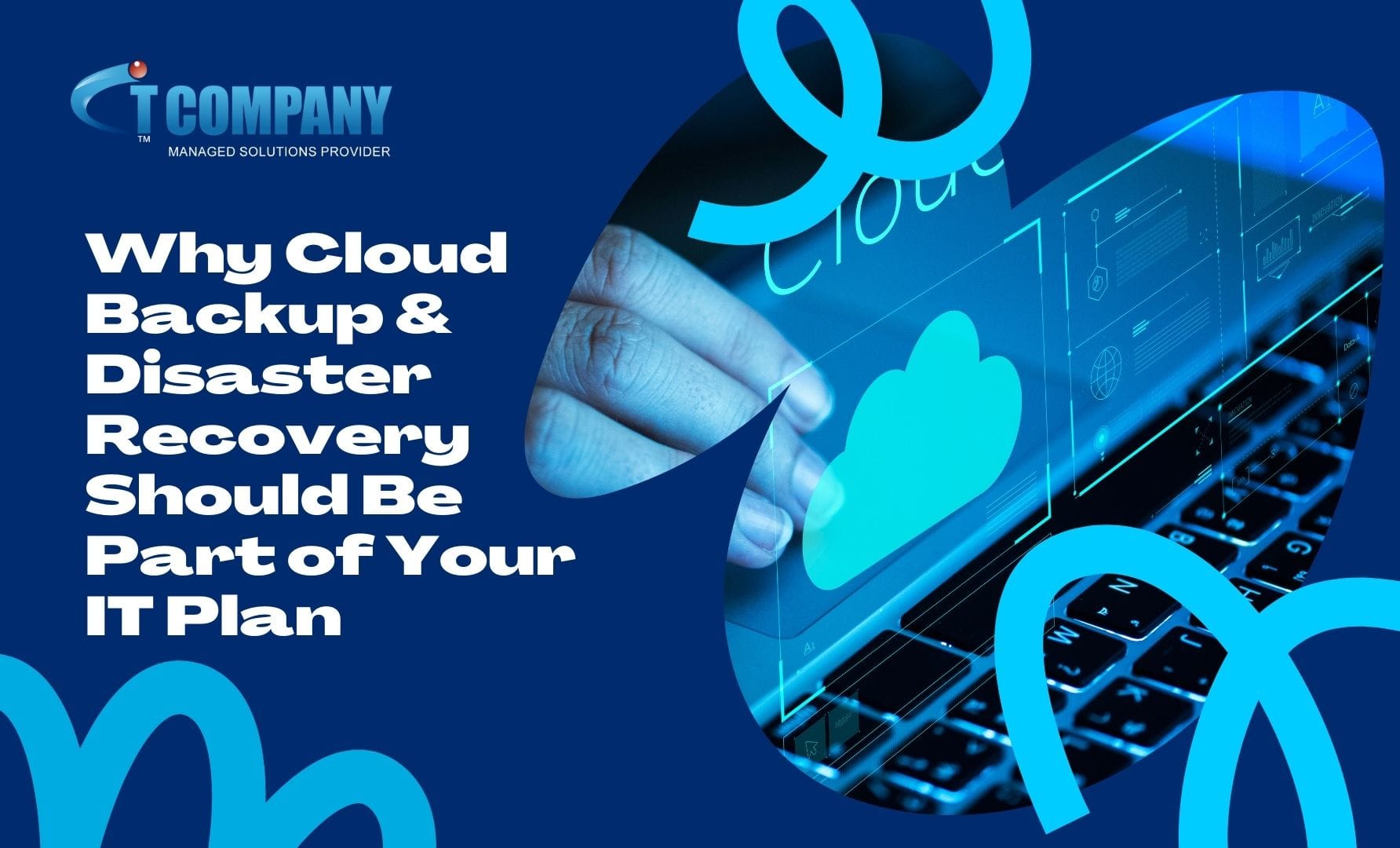Introduction: Why Data Protection Can’t Wait
In 2025, business data is more valuable than ever—yet it’s also more vulnerable than ever. From ransomware attacks and hardware failures to natural disasters, the threats to digital assets are constant. For many organizations, a single data loss incident could mean weeks of downtime, regulatory fines, or permanent closure. That’s why Cloud Backup & Disaster Recovery (DR) should be the backbone of every IT plan. These solutions don’t just safeguard data; they protect business continuity, brand reputation, and customer trust. In this blog, we’ll explain how cloud backup and disaster recovery work, why they’re essential today, and how IT Company empowers businesses to stay resilient in a world full of risks.Understanding Cloud Backup & Disaster Recovery
What Is Cloud Backup?
Cloud backup is the process of securely copying business data to offsite servers managed in the cloud. Unlike local drives or tapes, cloud backups are:- Automated – No manual uploads required.
- Scalable – Storage grows with your business needs.
- Encrypted – Data is protected in transit and at rest.
- Accessible Anywhere – Retrieve files from any device, any location.
What Is Disaster Recovery?
Disaster Recovery (DR) is a structured plan to quickly restore IT systems and applications after an outage or cyberattack. While backup protects your data, DR ensures your business keeps running. For example, if a ransomware attack locks your systems, backup provides a clean copy of your data, while disaster recovery gets your servers and applications online in hours—not days.Why They Matter More Than Ever
According to IBM’s 2023 Cost of a Data Breach Report, the average data breach now costs $4.45 million. Meanwhile, Forbes reports downtime can cost $5,600 per minute. Cloud backup and DR are no longer “insurance policies”—they’re survival strategies.The Rising Threat Landscape
Cyberattacks and Ransomware
Cybercrime is on the rise, with ransomware attacks surging by 95% in 2023 (Check Point Research). Attackers often target small and mid-sized businesses assuming they lack proper defenses. Cloud backups protect against ransom demands by ensuring you always have secure, recoverable data.Natural Disasters and System Failures
Floods, fires, storms, and regional power outages can devastate on-premise infrastructure. Cloud disaster recovery ensures continuity even when physical servers are unavailable.Human Error and Insider Threats
Nearly 30% of data loss comes from human mistakes—from accidental deletions to insider sabotage. Cloud backups with version control and rollback features make recovery simple and stress-free.Key Benefits of Cloud Backup
Scalability and Flexibility
Cost Efficiency
Automated Backups & Versioning
Remote Accessibility
Key Benefits of Disaster Recovery Planning
Business Continuity
Reduced Downtime
Regulatory Compliance
Stakeholder Confidence
How Cloud Backup & Disaster Recovery Work Together
- Cloud backup = secure storage of your data.
- Disaster recovery = fast restoration of your systems. Together, they form an integrated protection strategy that prevents downtime, data loss, and reputational harm.
Choosing the Right Cloud Backup & Disaster Recovery Solution
Key Factors to Consider
- Security features (encryption, compliance)
- Scalability and pricing flexibility
- Integration with existing IT infrastructure
- Provider’s track record and support availability
Pitfalls to Avoid
- Relying only on on-site backups
- Ignoring remote workforce endpoints
- Skipping regular disaster recovery testing
- Choosing low-cost providers without security guarantees
IT Company’s Expertise in Cloud Backup & Disaster Recovery
As a global IT solutions provider, IT Company helps businesses strengthen resilience with secure, reliable, and scalable IT infrastructure.Managed IT Services
We provide end-to-end management of your backup and DR strategy—from design to monitoring.Cloud Hosting with Redundancy
Our cloud hosting includes multi-zone redundancy, ensuring data remains available even during local outages.Cybersecurity Integration
Unlike many vendors, we combine backup with enterprise-grade cybersecurity—firewalls, monitoring, and threat detection.SIM Hosting & Bulk SMS for Crisis Communication
During downtime, communication is critical. Our Bulk SMS solutions let you instantly notify employees, partners, and customers.Real-World Use Cases
- Healthcare: Secure, compliant patient record storage.
- Finance: Regulatory-compliant continuity for banking systems.
- E-commerce: Keeping online stores operational during outages.
Industry Insights & Statistics
- Statista: Cloud storage market projected at $376B by 2029.
- IDC: By 2026, 65% of enterprises will adopt Disaster Recovery-as-a-Service (DRaaS).
- Forbes: Average downtime costs exceed $300,000 per hour.
Conclusion: Don’t Wait for Disaster
Business resilience is not optional, it’s essential. By integrating Cloud Backup & Disaster Recovery into your IT plan, you protect not only your data but also your future. IT Company is your trusted partner for business continuity. From cloud hosting to cybersecurity, SIM hosting, and managed IT services, we provide the complete toolkit to keep your operations running no matter what.FAQs
What’s the difference between backup & DR?
Backup protects data; DR restores operations.
How often should backups run?
Daily or real-time, depending on data sensitivity.
Is cloud backup secure?
Yes. IT Company ensures encryption, access control, and compliance.
Subscribe
Login
0 Comments
Oldest

